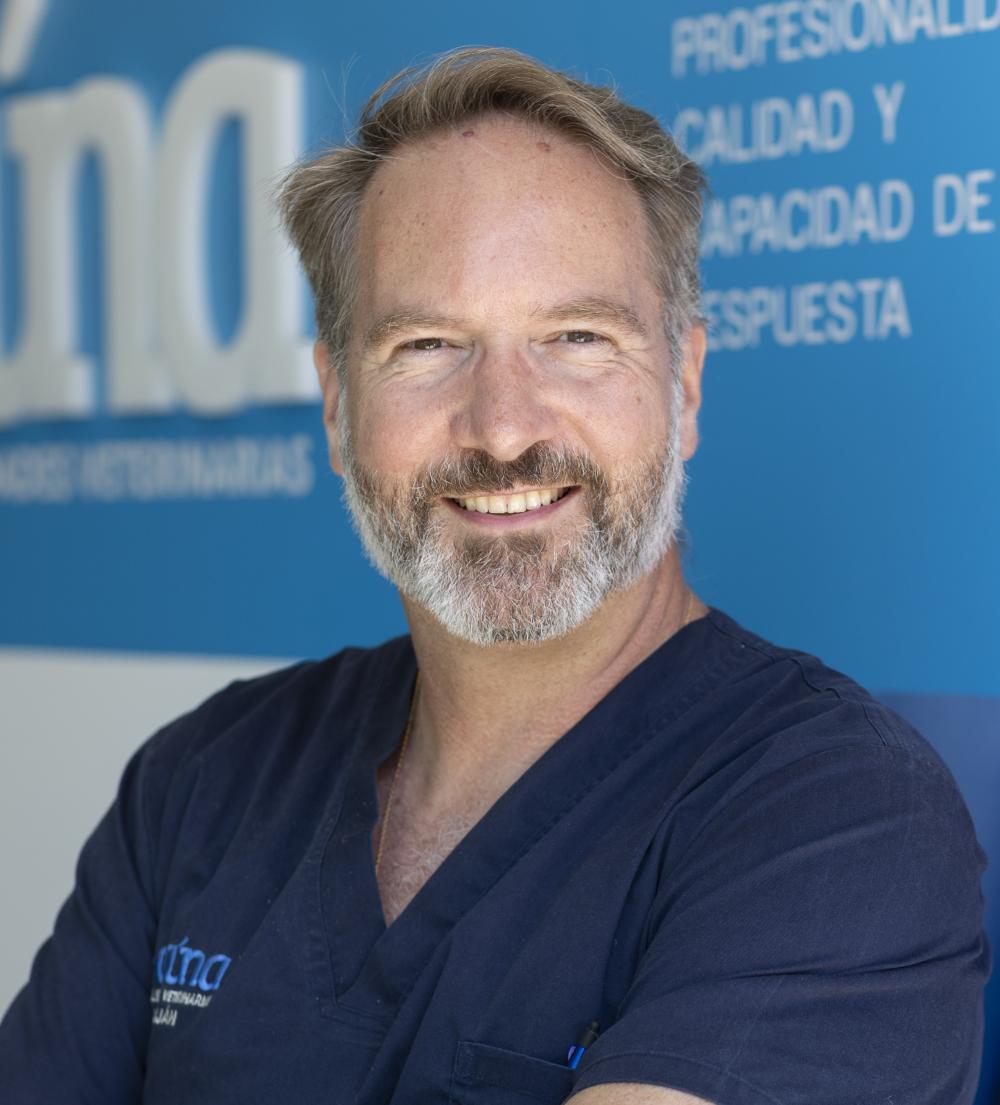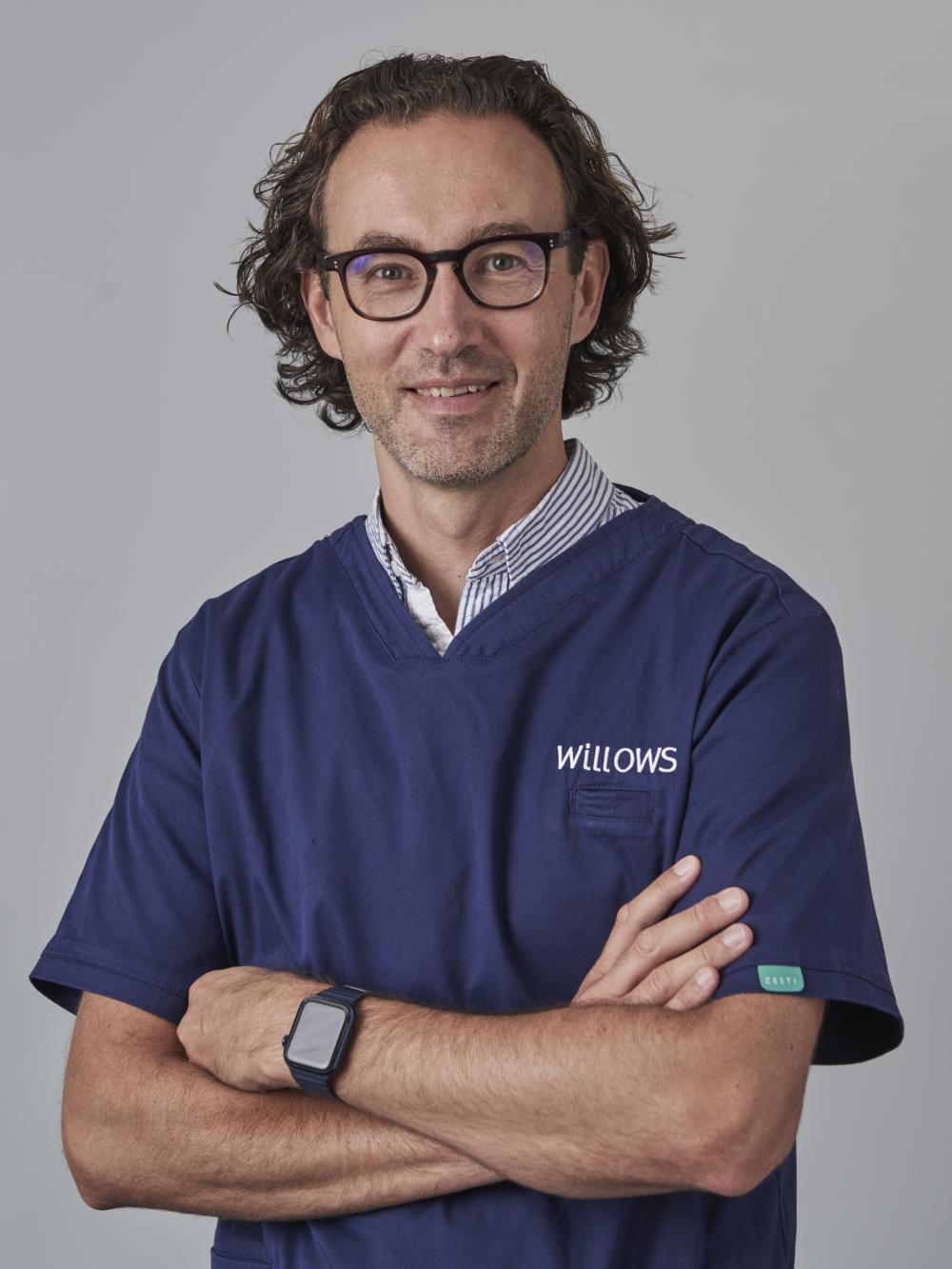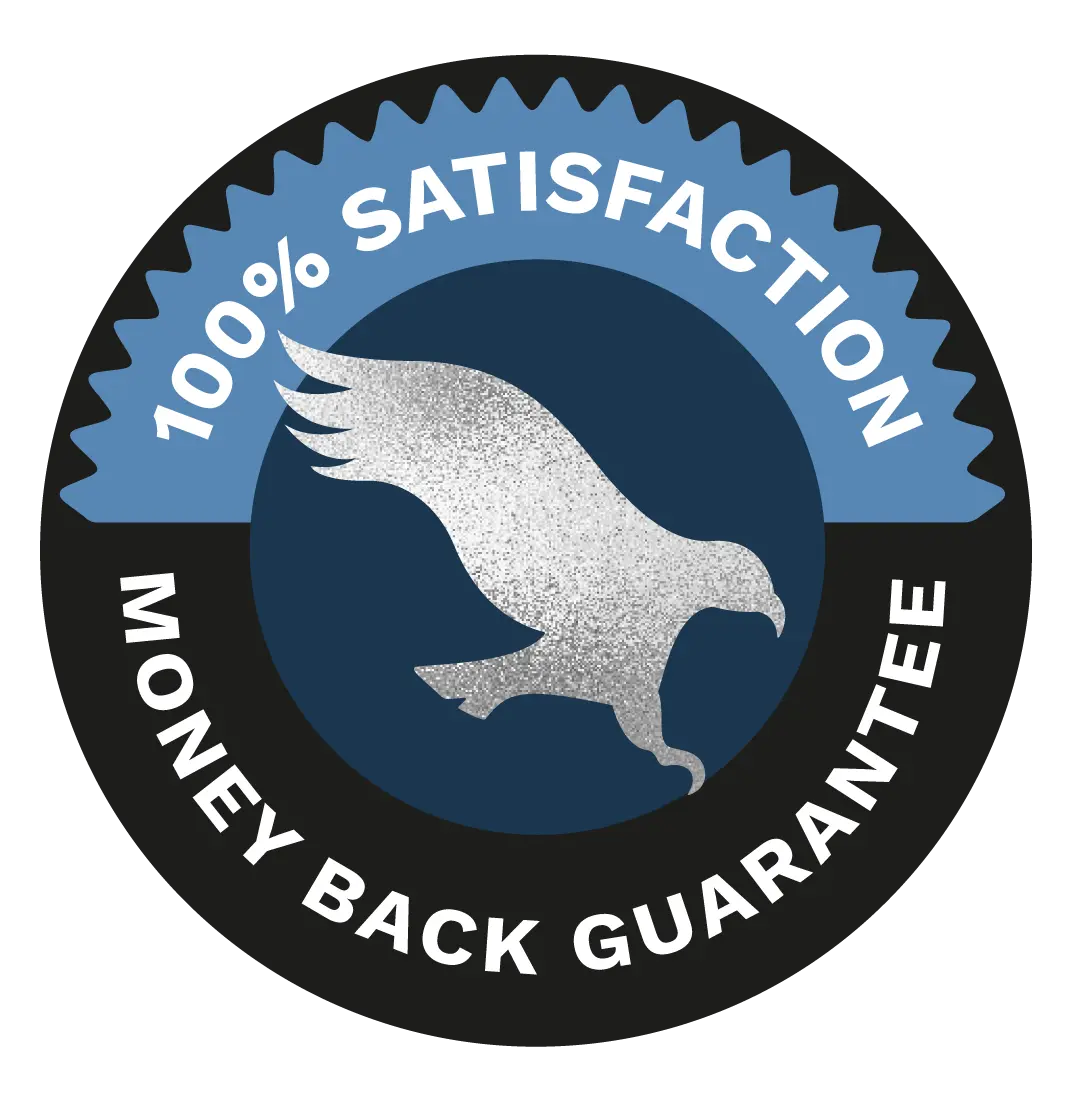The Small Animal Orthopaedic Surgery Advanced Programme is tailored for veterinary surgeons aspiring to excel in orthopaedics
This programme offers 14 modules led by two orthopaedic specialists (ECVS or ACVS diplomates), promoting interactive learning and practical guidance, with structured decision-making methods and real-life case studies to reinforce theoretical knowledge. A step-by-step decision-making process will help you make the best choice in treating orthopaedic conditions. Access to our world-leading online learning platform provides comprehensive learning resources, including notes, case discussions, videos, and reading materials.
Hands-on training is provided in state-of-the-art wet-lab facilities in Swindon, equipped with high-quality tools and equipment, along with live demonstrations of advanced procedures like CUE, PAUL, and THR, with radiography support for thorough evaluation.
This is an outsanding programme which provides exemplary support throughout your learning from a dedicated Programme Coordinator.
You will also receive a subscription to Harper Adam’s extensive e-library grants access to a wealth of scientific literature, for those progressing onto the Postgraduate Diploma.
Join us and take the next step in your orthopaedic surgery journey!
Learn more about our Advanced Certificates from our speakers and delegates
Hear what our delegates have to say
Don’t just take our word for it - our delegate feedback speaks for itself.
Key features of this programme
Interactive and engaging lectures, demonstrations and practical application
World class clinicians providing you with the very latest information in small animal orthopaedics
Perform new surgical techniques and more advanced procedures under close supervision in a wet-lab environment
Interactive and engaging lectures, demonstrations and practical application
World class clinicians providing you with the very latest information in small animal orthopaedics
Perform new surgical techniques and more advanced procedures under close supervision in a wet-lab environment
Programme details
Module Summary
01 - Stifle Surgery I - Arthroscopy
Key learning objectives
- Describe the radiographic features of a complete rupture of the cranial cruciate ligament in a dog.
- Describe the position of the arthroscopic portals used to inspect and treat the stifle joint.
- Discuss the different types of meniscal lesions that can be found on meniscal inspection and reflect on the advantages and disadvantages of stifle arthroscopy vs stifle arthrotomy.
02 - Stifle Surgery II - TPLO and CCWO
Key learning objectives
- Explain the two most common methods to calculate the tibial plateau angle (TPA)
- Perform planning for Tibial Plateau Levelling Osteotomy (TPLO) (Trans-Palatal Arch (TPA), degree of rotation, size of implants) on radiographs in a wet-lab environment.
- Describe how to calculate the size of the wedge to be removed when performing a Cranial Closing Wedge Osteotomy (CCWO) and perform planning on radiographs.
- Perform Tibial Plateau Levelling Osteotomy (TPLO) surgery in a wet-lab environment.
- Perform Cranial Closing Wedge Osteotomy (CCWO) surgery in a wet-lab environment.
03 - Stifle surgery III - Patella Luxation
Key learning objectives
- Describe all surgical techniques available to correct a case of medial patellar luxation grade III/IV
- Perform a lateral transposition (+/- proximalisation/distalisation) of the tibial tuberosity followed by stabilisation with k-wires and tension band in a wet-lab environment.
- Describe how to measure the degree of deformity of the distal femur and of the proximal tibia.
- Explain how to surgically correct deformity of the distal femur and of the proximal tibia.
- Perform a distal femoral osteostomy to treat deformity of the distal femur that lead to patella luxation in a wet-lab environment.
04 - Neurosurgery I
Key learning objectives
- Describe pathogenesis, diagnosis and treatment of intervertebral disc disease
- Explain how to perform a hemilaminectomy/corpectomy to decompress the thoraco-lumbar spine
- Summarise how to perform a dorsal laminectomy to decompress the lumbo-sacral spine
- Practice hemilaminectomies, corpectomies and dorsal laminectomy in a wet-lab environment
05 - Neurosurgery II
Key learning objectives
- Describe cervical disc disease
- Describe cervical spondylomyelopathy
- Explain how to perform a ventral slot
- Explain how to stabilise vertebral fractures
- Perform a ventral slot and stabilise vertebral fractures in a wet-lab environment
06 - Shoulder Surgery
Key learning objectives:
- Describe the anatomic structures that require assessment in order to perform arthroscopy.
- Describe the positioning of the portals used to perform shoulder arthroscopy.
- Describe the modified Cheli approach to the shoulder joint to treat an Osteochondral (OC) lesion of the humeral head.
- Describe the cranio-medial surgical approach to biceps tendon to perform a tenotomy/tenodesis.
- Perform the biceps test, the drawer test, and the biceps retraction test to diagnose biceps pain.
- Perform arthroscopy of the shoulder joint in a wet-lab environment.
- Demonstrate how to perform a Velpeau bandage and a spica splint bandage.
- Describe the advantageous properties of cancellous bone in regards to a bone graft.
- Describe how to collect a cancellous bone graft from the proximal humerus.
- Perform collection of cancellous bone graft from the proximal humerus in a wet-lab environment.
07 - Elbow Surgery I
key learning objectives
- Describe the anatomic structures that require assessment in order to perform elbow arthroscopy.
- Describe the positioning of the portals used to perform elbow arthroscopy.
- Describe how to perform arthroscopy and an arthroscopic subtotal coronoid ostectomy.
- Perform arthroscopy of the elbow joint in a wet-lab environment.
- Perform an arthroscopic subtotal coronoid ostectomy in a wet-lab environment.
- Describe the modified Wendelburg approach commonly used to treat Osteochondral (OC) lesions of the medial humeral condyle or to approach the medial compartment to perform an unicompartimental elbow replacement.
08 - Elbow Surgery II
Key learning objectives
- Describe the anatomy of the ligaments of the elbow joint and perform an open reduction (tunnel technique) following a traumatic luxation of the elbow joint.
- Describe common techniques to diagnose an ununited anconeal process and the treatment options.
- Compare the surgical options that are available for the different manifestations of elbow dysplasia *IC .
- Perform an oblique proximal ulnar osteotomy and a distal ulnar ostectomy as a treatment for short ulnar syndrome and elbow dysplasia in a wet-lab environment.
- Recognise the case selection criteria to perform Canine Unicompartmental Elbow (CUE) and Proximal Abducting Ulnar Osteotomy (PAUL) surgeries.
- Perform a Canine Unicompartmental Elbow (CUE) in a wet-lab environment.
09 - Elbow Surgery III
Key learning objectives
- Describe step-by-step how to repair a Y or T fracture.
- Perform a lateral condylar humeral fracture repair in a wet-lab environment.
10 - Internal Fixation
Key learning objectives
- Compare the difference between stress and strain and strength and stiffness and describe a stress/strain curve produced when a material is loaded.
- Describe the different properties of cortical and cancellous bone.
- Compare the difference between the typical load-displacement curves produced when cortical and cancellous bone is loaded.
- Summarise the differences between primary and secondary bone healing. *IC
- Describe the radiographic appearance of delayed union, non-union and malunion.
- Explain the causes and treatment options for delayed union, non-union and malunion.
- Recognise the type of forces that need to be considered when choosing an implant.
- Discuss the type of fractures that are suitable for open anatomic reconstruction.
- Identify the primary implants that can be used in the most common fractures of the thoracic and pelvic limbs.
- Compare the differences between cortical and cancellous screws.
- Describe the role that a locking screw has in a plate-screw construct compared to a non-locking screw.
- Explain the tension side/surface in the long bones of the thoracic and pelvic limbs.
- Describe the different methods of plate application in long bones of the thoracic and pelvic limbs.
- Explain the different configurations and considerations when using wire in a tension band cerclage of a transposed tibial tuberosity.
- Perform a tension band cerclage of a transposed tibial tuberosity, using an appropriate configuration and wire size for the patient, in a wet-lab environment. *IC
- Describe the lateral surgical approach to the femur.
- Explain the considerations made when selecting an intramedullary pin size to be used in conjunction with a lateral plate (plate-rod construct).
11 - External Fixation
Key learning objectives
- Recognise the fifteen critical principles for the application of a skeletal fixator.
- Describe the different External Skeletal Fixation (ESF) configurations that can be used to treat femoral and tibial fractures.
- Explain how to apply an External Skeletal Fixation (ESF) to treat a short oblique tibial and fibular fracture.
- Describe the safe corridors to apply an External Skeletal Fixation (ESF) on humerus, radius, femur, and tibia.
- Discuss the factors that can influence the resulting biomechanics of an External Skeletal Fixation (ESF) construct.
- Discuss the how the biomechanics of External Skeletal Fixation (ESF) will influence fracture management planning.
- Describe the different types of External Skeletal Fixation (ESF) available and their specific use.
- Demonstrate application of a type IIb external fixator on a tibia. *IC
12 - Carpus and Hock
Key learning objectives
- Describe the anatomy of the carpus and the hock joints *IC.
- Compare the difference between performing a partial vs pancarpal arthrodesis.
- Compare the difference between performing a partial vs pantarsal arthrodesis.
- Describe the basic principles to adhere to when performing an arthrodesis.
- Discuss three different techniques to treat multiple metacarpal/metatarsal fractures.
- Describe in detail how to place a Secured Pin Intramedullary Dorsal Epoxy Resin (SPIDER) external fixator.
- Describe the principles of tendon repair. *IC
- Perform a locking-loop suture (Kessler) and a three-loop pulley suture to repair tendon ruptures in a wet-lab environment.
- Explain how to perform placement of a tibio-calcaneal screw to temporary immobilise the hock joint.
- Perform placement of a tibio-calcaneal screw to temporary immobilise the hock joint in a wet-lab environment.
13 - Pelvic Surgery I
Key learning objectives
- Describe the different anatomic approaches to treat a fracture of the iliac body.
- Describe how to approach and stabilise a short oblique iliac fracture.
- Explain how to perform a sacro-iliac stabilisation using a lag screw and/or a trans-iliac pin/bolt.
- Perform a sacro-iliac stabilisation in a wet-lab environment.
14 - Pelvic Surgery II
key learning objectives
- Describe the anatomy of the hip joint and the surgical approach to perform a toggle stabilisation.
- Describe all different surgical options to treat an acute coxo-femoral luxation.
- Perform a femoral head and neck excision in a wet-lab environment.
- Describe all surgical options available for hip dysplasia: based on the dog’s signalment.
- Explain the advantage and disadvantage of all surgical options for hip dysplasia.
- Explain how to perform a Juvenile Symphysiodesis.
- Perform a Juvenile Symphysiodesis in a wet-lab environment.
Qualifications
Our Small Animal Orthopaedic Surgery Advanced programme offers you a comprehensive range of structured learning. The course will give you new knowledge and skills to take back to practice, and you can work towards a recognised qualification. Our advanced programmes are not only for those who have gained a previous qualification, such as an ISVPS General Practitioner Certificate, a Postgraduate Certificate by Harper Adams University, or an equivalent, but is also suited for experienced professionals wanting to advance their orthopaedic knowledge.
We recommend you have at least five years’ experience of working in practice before taking this course – talk to one of our team to find out more.
ISVPS General Practitioner Advanced Certificate (GPAdvCert)
By attending the full online structured programme and following successful assessment, including an exam, you can gain the GPAdvCert awarded by the International School of Veterinary Postgraduate Studies (ISVPS).
Postgraduate Diploma (PgD)
A route to a PgD in Advanced Veterinary Practice Sciences is available (subject to availability) through our partnership with Harper Adams University (HAU).
Please see our pricing table for GPAdvCert fees in the pricing tab.
Speakers
Pricing
£13,899.00
£14,498.00Payment & VAT Information
1. Many of our courses come with deferred payment and instalment options. Click “Book Now” to see what’s available for this course.
2. All prices will be displayed exclusive of local sales tax.
Payment Terms & Conditions
Registration Information
100% Satisfaction
We're completely confident in the quality of our training and CPD. So much so that if you're not 100% satisfied with your certificate course, we'll give you a 100% refund. Just get in touch with us within 30 days of your start date and we'll sort the rest. T's and C's apply.
Find out moreFAQs
Practical Sessions
Where are practical CPD courses or face-to-face modules held?
What will the timings be for face-to-face certificate modules and practical CPD sessions? How will my day be structured?
Where do the cadavers come from for the practical CPD and surgical modules/courses?
What should I wear to a practical CPD course/module?
I will be travelling from overseas, do I need a Visa?
Will the dogs used for practical CPD courses be sedated?
Will the dogs used for scanning have any abnormalities?
Are the dogs used for ultrasound CPD clipped?
Are cats used for any of the ultrasound courses?
Payments & Finance
What payment methods do you accept?
Do you offer any flexible payment plans?
What payment methods can I use for setting up a direct debit?
Do you issue separate invoices for each instalment?
Why was my Direct Debit payment not charged on the day that is established in my payment plan?
Why couldn’t I make payment during check-out?
Where can I find the bank details for the bank/wire transfer?
What happens if my circumstances change and I need to cancel my order?
When is payment for my veterinary CPD course due?
How much do the veterinary CPD courses and certificate programmes cost?
My course includes assessments with HAU, how do I make payment for these?
My CPD course includes assessments with ISVPS, how do I make payment for these?
Can I pay by Direct Debit?
Advanced Veterinary Certificates
How many credits does an Advanced Certificate grant towards a postgraduate diploma or professional veterinary masters?
How will I be assessed for the ISVPS GPAdvCert?
What’s not included in the Advanced Certificate programme fee? Do I need to budget for further costs?
What does the veterinary advanced postgraduate certificate programme fee include?
Who is eligible for Advanced Certificate programmes?
What is the GPAdvCert qualification? How is it different to the GPCert?
Our Clinical Excellence Centre
Discover the new Improve Veterinary Education Clinical Excellence Centre featuring two surgical wet-lab training theatres and a radiology suite.
Find out more

















